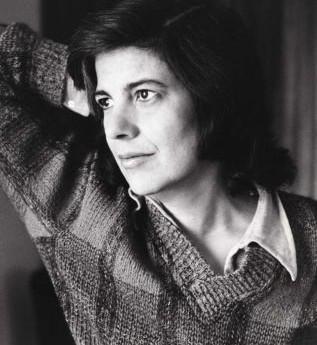
Susan Sontag. Cover photo from As Consciousness is Harnessed to Flesh.
As Consciousness is Harnessed to Flesh by Susan Sontag, the second volume of her diaries, has come out (published by Hamish Hamilton). Her son, David Rieff, who lit upon the notebooks and journals, has edited them sparingly. This volume starts in the early Sixties with Sontag in New York establishing herself as a writer (and having discovered her bisexuality), and goes through to 1980. During that period she wrote three novels and five critical works, including the famous Notes on Camp and On Photography. Critics are split between those who admire the fragmentary nature of the journals, and those who see her revelation of uncertainty as a diminishment of her power as a critic.
“I’m not a genius…my mind isn’t good enough, isn’t really first rate…I’m not mad enough, not obsessed enough.” Susan Sontag, quoted in The Sunday Times.
The journals are brilliant. Sontag, said an impressed Anne Chisholm in The Sunday Telegraph, was “admired for her undeniable brilliance and originality; she was also mocked for her deep seriousness, her sttrong ego and blazing need for attention.” This is more of a “commonplace-book than a diary.” There’s no “coherent account”, and Rieff follows her lead, with a “bare minimum of context, explanation and annotation.” This is “frustrating.” However, a “powerful self-portrait” does emerge, of huge “inner conflict.” The reader warms to her – she lists “appealing adjectives” such as “ ‘besotted, cerulean, ogival,’” for instance. And in the end, this “long, untidy, sometimes obscure” book entirely “justifies the considerable effort the reader must make.” It’s possible that one day Sontag’s diaries will come to seem “as brilliant and important as anything she wrote.”
No they’re not. The diaries show her uncertainty, said a grumpier Leo Robson in The Daily Telegraph. Those readers who’ve not got on with her writing will now be able “to support their scepticism with words from the horse’s mouth.” She portrays herself as “fearful and shrinking,” the “damaged daughter” and “devoted mother.” The journals also show how she was contantly putting things off – “a way of perpetuating dreams.” They show that her journals do “illuminate” her writing – but “not always flatteringly.” And in fact, she rarely hit the nail on the head in terms of criticism, either.
The detail is good (mostly). We learn a lot about her loves, said Sian Griffiths in The Sunday Times. Annie Leibovitz, Iren Fornes, Carlotta del Pezzo, Joseph Brodsky, Baroness Nicole de Rothschild. “Her heart was one often broken,” as Reiff notes in the preface. She self-lacerated in these journals. The existence of her son pulls her back from the brink. But we can also see the “heady and glamorous life she lived.” Hanoi, London, Tangier, for instance. However, whilst all this might be great for Sontag scholars, it’s “too obscure often for the lay reader.”
Come on, give her a chance. The title, said Emily Stokes in The Guardian, comes from a note to an entry from 1965: “ ‘spiritual project – but tied to making an object (as consciousness is harnessed to flesh).’” This is “a curious phrase, suggesting the paradox that is art: a real, tangible thing resulting from a long, indefinable process.” It also evokes “the duality of Sontag herself.” Her essays may be “arch, intransigent” – so it’s a “rare pleasure to read, in her diary, discoveries being made in real time.” As such, the experience of reading them is “strangely mesmerising.”

